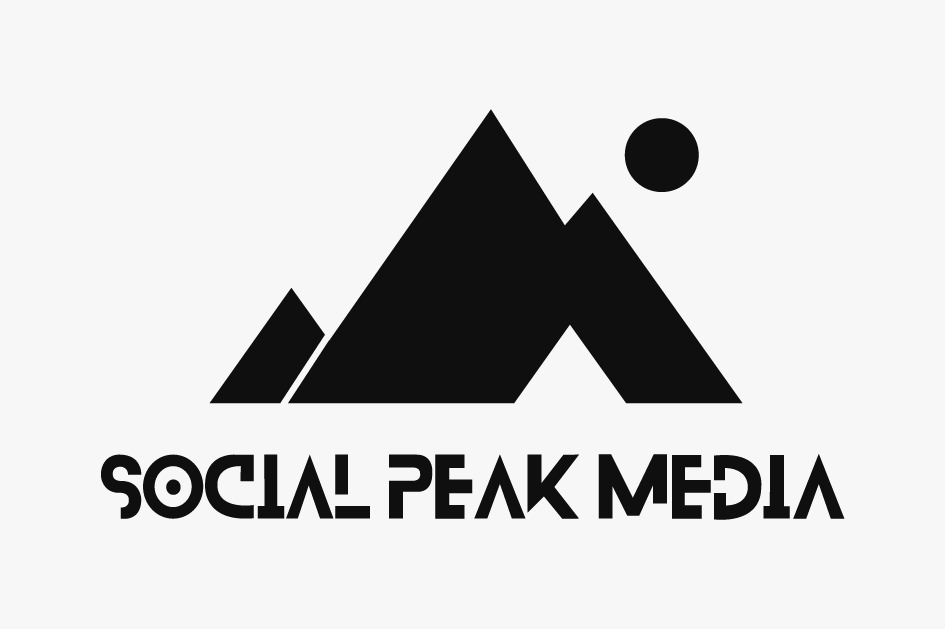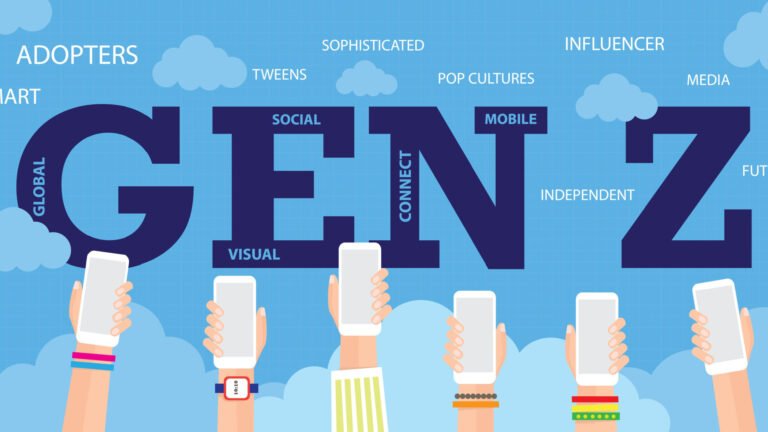The Ultimate Guide to Content Creation for Every Social Media Platform (2025 Edition)
We live in a time when more than two‑thirds of the world’s population is active on social media. The average person spends over two hours a day scrolling, watching, and interacting across platforms. Brands might wonder whether blogging or long‑form articles still matter, but the truth is that social feeds are only a gateway.

When people have questions, want deeper context, or are ready to buy, they turn to search. That’s why a strong content strategy that spans social platforms and drives users back to owned channels (like your website or blog) is essential.
This Guide to Content Creation for Social Media Platform breaks down exactly what works (and what flops) on each major channel, because TikTok, Instagram, Facebook, and YouTube are not playing the same game.
Digital‑first branding and the rise of social commerce
Social profiles have become the showroom for modern brands. According to Sprout Social, audiences now experience brands primarily through social media. This shift means that digital brand strategies and consistent social content are no longer “nice‑to‑haves.” They are the pillars of brand perception and loyalty. Your company’s voice, tone, and visual identity must carry across every platform. In a noisy, algorithm‑driven landscape, authentic storytelling and purposeful messaging win trust.
Why a platform‑agnostic strategy works
While each platform has its own quirks, the fundamentals of compelling content remain constant. People crave value and relevance. They want content that educates, entertains, or solves a problem. The algorithms reward content that sparks meaningful interactions—likes, comments, shares, and saves.
When you understand the common threads and then tailor your message to each platform, you build a cohesive brand ecosystem that feeds itself. Posts on one network drive traffic to another. A LinkedIn article morphs into a carousel for Instagram, a short video for TikTok, and a long‑form tutorial for YouTube.
Core Principles of Content Creation in 2025
The digital landscape is evolving fast. Yet certain principles remain timeless—and a few are more important than ever.
Video is the universal language
Video continues to dominate every algorithm. Hootsuite’s 2025 social trends report notes that video has become the top format across TikTok, Instagram, YouTube Shorts, LinkedIn, and Threads. Short‑form video is especially powerful: TikTok now allows clips up to 10 minutes, Instagram Reels can be 15–90 seconds, and YouTube Shorts are up to 3 minutes. Even LinkedIn is prioritizing video content. Repurposing video across platforms helps marketers extend reach without reinventing the wheel.
Culture and authenticity drive engagement
Consumers across generations use social media to keep up with trends more than television or print. But they don’t want brands simply jumping on memes; they expect cultural competence. Sprout Social points out that raw, first‑person storytelling and relatable content outperform polished productions.
Younger audiences curate positive, uplifting feeds and are drawn to content that is authentic, vulnerable, and educational. Creating for these audiences means understanding micro‑communities and delivering stories that resonate with them. The key is to participate thoughtfully rather than chase every trend.
The creator economy and AI enable scale
Social media is no longer just about brands talking to consumers. The creator economy thrives on collaboration and co‑creation. Influencers of all sizes—nano to mega—bring niche audiences and trust. Even B2B creators are gaining traction on LinkedIn. User‑generated content (UGC) remains a powerful way to demonstrate authenticity and build community.
The rise of AI tools is helping marketers battle creative burnout. Sprout Social reports that AI is being adopted to assist with ideation, editing, and scheduling. These tools won’t replace human creativity, but they do streamline repetitive tasks so that marketers can focus on storytelling.
Communities and interactive experiences
Algorithms increasingly reward content that fosters meaningful interactions. On Facebook, posts that spark conversations—such as polls, quizzes, and live videos—see higher reach and engagement. TikTok prioritizes content that resonates within niche communities like #BookTok and #SportsOnTikTok. Instagram users expect brands to respond quickly to comments; failure to do so can drive them to competitors. Nurture your communities by listening, responding, and co‑creating.
Social search and SEO integration
Social platforms double as search engines. People use TikTok and Instagram to find recommendations and tutorials. Pinterest runs on keywords. Facebook ranks content partly based on relevant keywords and group involvement, highlighting the importance of good SEO practices. Think about the terms your audience searches for, include them naturally in captions and hashtags, and optimize your profile and bio for discoverability.
Platform‑Specific Strategies
Every network has its own algorithm, content formats, and cultural norms. In this section, we’ll break down best practices for major and emerging platforms. Follow the H3 titles (platform names) and H4 sub‑sections (algorithm, content formats, posting frequency & engagement, metrics) for easy navigation.
LinkedIn – Building Professional Authority

How the LinkedIn algorithm works
LinkedIn’s feed algorithm prioritizes relevance and professional value. Posts from your network, colleagues, and followed pages are weighed against your engagement history. Socialinsider’s 2025 benchmark report found that carousel posts and document attachments generate the highest engagement for company pages.
Video posts also perform well, achieving 1.4× more engagement than static posts. LinkedIn’s algorithm tends to amplify posts that encourage conversation, use thoughtful hashtags, and share practical insights.
Content formats that succeed
- 1. Carousel posts and documents – Use PDFs or multi‑slide carousels to share a guide, case study, or list of tips. Carousels encourage swiping, which signals engagement. According to Social Media Today, these posts receive higher impressions and engagement than single‑image posts.
- 2. Native video – Share short educational videos or clips from webinars. Because video posts receive more engagement, plan series around key topics. Optimize with subtitles for silent viewing.
- 3. Thought leadership articles – Publish long‑form articles via LinkedIn’s newsletter feature. Deep dives build authority and can drive followers to subscribe.
- 4. Employee advocacy and behind‑the‑scenes – Showcase your team’s expertise, culture, and daily work. Authentic employer branding humanizes the company.
Frequency, engagement, and best practices
- Post regularly – Aim for 2–4 times per week to maintain visibility without overwhelming your audience.
- Use hashtags judiciously – Add 3–5 relevant hashtags; include both niche tags (#ContentMarketing) and broader industry tags (#B2B). Avoid overstuffing.
- Engage promptly – Respond to comments within 24 hours to boost your post’s visibility. Highlight comments by industry peers.
- Encourage conversation – Ask open‑ended questions, conduct polls, and invite opinions. Conversation signals relevance.
Metrics to watch
Track engagement rate (reactions, comments, and shares per impression), follower growth, link clicks (for traffic to your site), newsletter subscriptions, and qualitative feedback (DMs, comments). Adjust your strategy if carousels consistently outperform other formats.
YouTube – Long‑Form Authority and Short‑Form Discovery
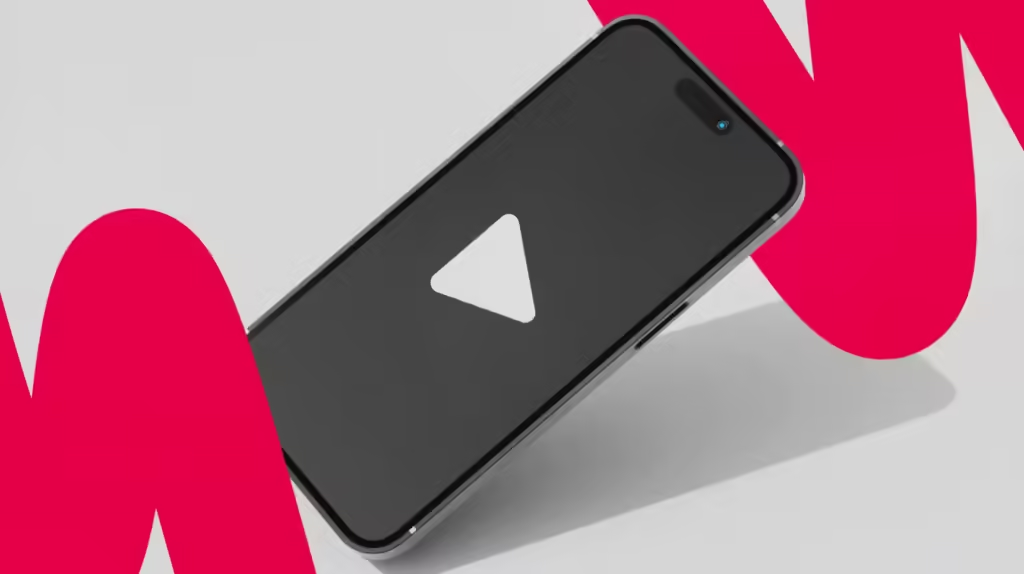
Understanding the YouTube algorithm
YouTube’s algorithm uses signals such as click‑through rate, watch time, how many videos users watch from a channel, and past search history to recommend content. Its objective is simple: maximize expected watch time per impression. Engagement metrics like likes and comments matter, but watch time is still king because it reveals true viewer interest. YouTube’s home page and suggested videos serve as the primary discovery surfaces.
Content formats for 2025
- 1. YouTube Shorts – Short vertical videos (up to 3 minutes) can reach new audiences and drive subscribers. Use trending sounds, quick hooks, and captions to engage viewers quickly.
- 2. Long‑form videos (5–20 minutes) – Tutorials, case studies, podcasts and product demos deliver depth and keep viewers engaged longer, boosting watch time. A consistent format and niche help build subscriber loyalty.
- 3. Series and playlists – Create a recurring series or playlist to encourage binge watching. For example, a weekly Q&A or behind‑the‑scenes vlog invites viewers to watch multiple videos in a row, signaling to YouTube that your content is engaging.
- 4. Community tab posts and polls – Use the Community tab to share updates, tease upcoming videos, ask questions and run polls to keep your audience engaged between video uploads.
Posting cadence and optimisation
- Consistency – YouTube rewards channels with regular uploads and a clear premise. Aim for weekly or biweekly videos to maintain momentum.
- Thumbnails and titles – Craft compelling thumbnails and titles without clickbait. Optimize for keywords but promise what you deliver.
- Retention hooks – Hook viewers in the first 5–10 seconds. Preview what they’ll learn, then deliver on that promise.
- CTAs and end screens – Encourage subscribers and cross‑promote other videos via cards and end screens.
Measuring success
Important metrics include average view duration, watch time, click‑through rate (CTR), subscriber growth, and returning viewers. Monitor which content themes have higher retention and adjust accordingly.
Instagram – Visual Storytelling and Real‑Time Trends
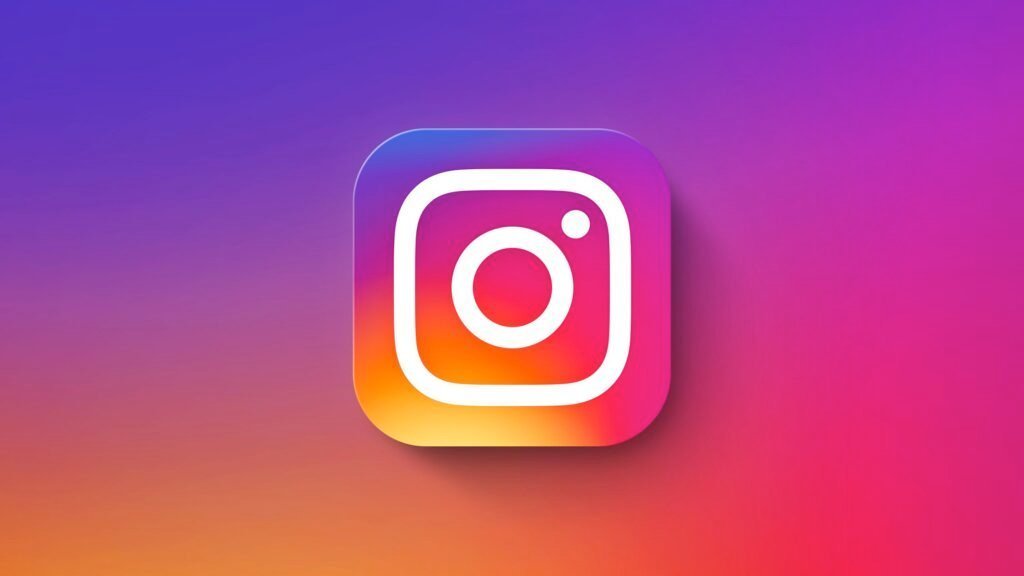
How Instagram ranks content
Instagram’s algorithm considers several factors: engagement (likes, comments, shares, saves), relationships (your interactions with the poster), relevance, and timeliness. Short‑form video, particularly Reels, is favored in 2025. Consumers value authenticity and “edutainment” content—informative yet entertaining. User‑generated content (UGC) builds trust, and interactive features (polls, quizzes, questions) foster engagement.
Best content types and features
- 1. Reels and short videos – Use Reels to tell stories, share tips, or behind‑the‑scenes clips. Strong hooks in the first few seconds and trending audio help capture attention. Test different lengths: videos under 15 seconds receive the most interactions.
- 2. Carousels – Share step‑by‑step tutorials, before‑and‑after images, or collections of user photos. Carousels encourage users to swipe, increasing time spent on your post.
- 3. Static images – High‑quality photos and graphics still perform well and are the second most engaging content type after ultra short videos.
- 4. Stories – Use Stories for daily updates, polls, Q&As, and interactive stickers. They keep your brand top‑of‑mind and allow informal engagement.
- 5. Live video – Host webinars, interviews, or product launches live. Live sessions drive real‑time engagement and can be repurposed as Reels or IGTV posts.
Posting cadence and engagement
- Frequency – Post to the feed 3–7 times per week. Use Stories daily to keep your audience engaged without overwhelming them.
- Hashtags – Use a mix of broad and niche hashtags (5–10 per post). Do your research to ensure relevancy.
- Captioning – Write captions that add context or tell a story. Longer captions encourage saves and shares.
- Community management – Respond to comments quickly. A Sprout Social survey found that 73% of consumers are likely to buy from a competitor if a brand doesn’t respond quickly to social comments. Show you’re listening.
Metrics that matter
Track engagement rate, reach, accounts engaged, saves, and share frequency. Use Instagram Insights to identify top‑performing reels and reuse successful elements.
Facebook – Conversations, Reels, and Personalization
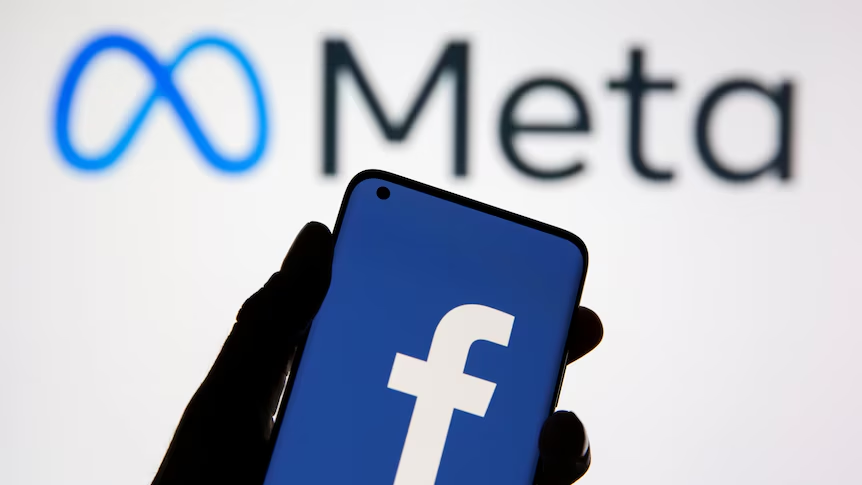
How the Facebook algorithm operates
The Facebook algorithm uses artificial intelligence to rank each post by how relevant it will be to a user. It evaluates every post, ad, story, and Reel, scoring content based on signals like who posted it, the type of content, and predicted engagement. Meta calls this “personalized ranking.” When you open your feed, Facebook curates a mix of content from your friends, Pages you like, and Groups, along with recommended posts.
In 2025, AI has become integral to Facebook’s ranking system. The algorithm looks at hundreds of signals and uses over 100 prediction models. Key ranking factors include:
• Who posted it – Content from friends and trusted sources ranks higher.
• Type of content – The algorithm shows users more of what they engage with (videos, photos, or links).
• Likelihood of engagement – Posts predicted to spark comments, likes, and shares are prioritized.
• Content diversity – Facebook intersperses recommended content and different post types so users don’t see too much of one format.
Content strategies for 2025
- 1. Prioritize meaningful interactions – Facebook explicitly states it will prioritize posts that spark conversations. To encourage this, create interactive posts: ask questions, share polls, and host live Q&As. According to Neptune AI’s Ani Ghazaryan, polls, quizzes, and live videos drive exceptional engagement because they invite users to participate.
- 2. Use Reels and short videos – Meta is doubling down on Reels and video. Hootsuite reports that Reels will continue to be prioritized in the feed. Short, entertaining videos increase watch time and shares. Consider adding native captions and dynamic graphics.
- 3. Explore AR and immersive experiences – Although Meta is shutting down third‑party AR tools, it plans to develop its own AR effects. Brands should experiment with AR filters and immersive experiences to stand out.
- 4. Focus on relevance and keywords – The algorithm calculates a relevance score for each post. Optimizing your posts for relevant keywords and sharing in targeted Groups improves your score.
Posting cadence and community management
- Post frequency – Aim for 3–5 posts per week. Quality outweighs quantity; Facebook penalizes spammy behaviour.
- Engage quickly – Respond to comments and messages within a few hours; recency affects ranking.
- Leverage Groups – Create or participate in niche communities. Posts in active Groups often achieve higher engagement.
Key metrics
Monitor reach, engagement rate, comments per post, shares, average watch duration for video, and click‑through rate. Use Facebook Insights to test different content types and times.
TikTok – Micro‑Virality and Niche Communities
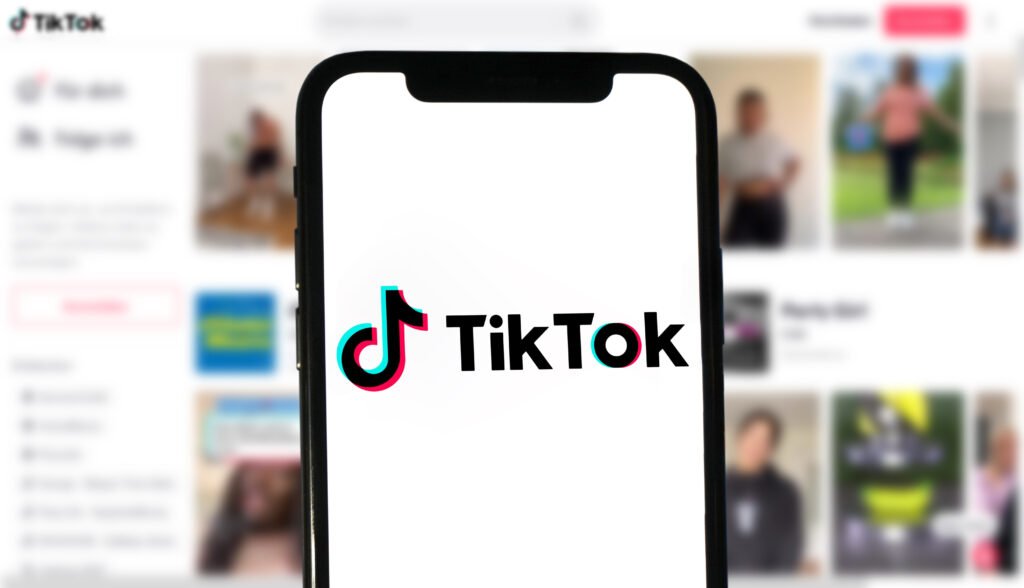
How the TikTok algorithm works
TikTok’s algorithm is highly personalized. It considers user interactions (likes, shares, comments, watch time, rewatches), video information (captions, hashtags, sounds), and device settings. Success on TikTok isn’t about replicating viral trends; it’s about finding your niche.
Hootsuite recommends focusing on micro‑virality—creating content that resonates deeply within specific communities like #BookTok or #SportsOnTikTok. Strong hooks in the first seconds and optimizing your captions with keywords increase watch time and search discoverability.
Winning content formats
- 1. Short, authentic videos – TikTok users crave unpolished, relatable content. Educational “how‑to” clips, behind‑the‑scenes glimpses, and quick tips perform well.
- 2. Trending sounds and effects – Using trending audio can improve your chances of appearing on the For You page. However, always ensure the sound aligns with your brand’s tone.
- 3. Storytelling and narrative arcs – Even in 15–60 seconds, tell a story: set the scene, deliver value, and end with a call to action.
- 4. Challenges and duets – Participate in or initiate challenges to encourage UGC. Use duets to respond to other creators and collaborate with them.
Posting cadence and community building
• Post frequently – Aim for at least one video per day. TikTok rewards active accounts, and the sheer volume of content means frequent posts increase your chances of being seen.
• Engage within your niche – Comment on others’ videos in your industry, answer questions, and stitch relevant content. TikTok users connect through comments.
• Optimize for search – Use descriptive captions and relevant hashtags. TikTok’s Creative Center can help identify trending tags.
Metrics to track
Focus on watch time (average percentage watched), views, engagement rate, followers gained, and shares. Track which topics get the most saves and replicates.
Threads – Conversational Microblogging
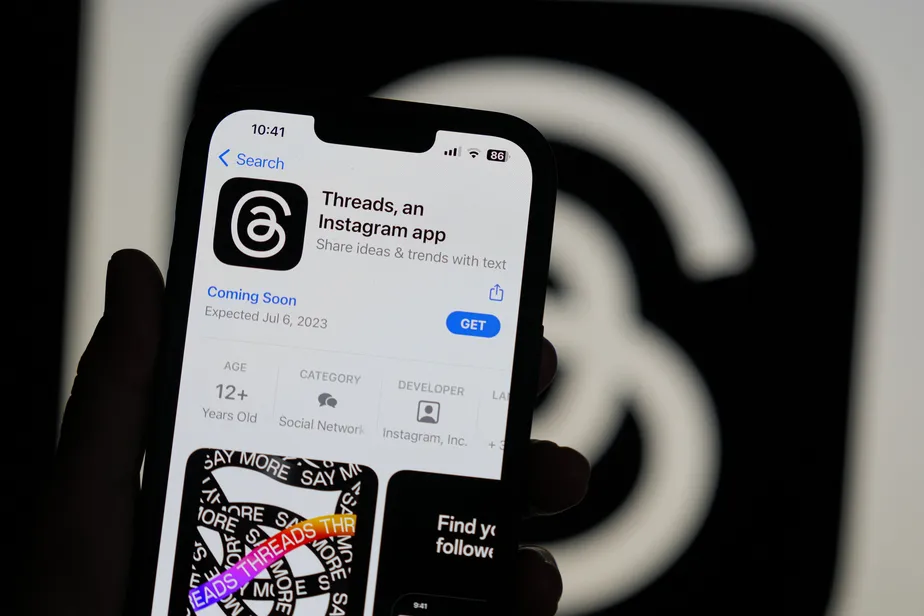
Understanding the Threads algorithm
Threads, Instagram’s text‑centric platform, combines signals from Instagram and Facebook with its own AI ranking. The algorithm predicts how likely users are to like a post, click to view replies, follow the author, click on the author’s profile, or scroll past. Posts are ranked according to these predictions, mixing content from accounts you follow with recommended posts.
Content best practices
1. Consistent posting – Metricool recommends posting at least once per day to stay visible.
2. Spark conversations – Ask questions, create polls, and tag topics. The algorithm favors content that encourages replies and discussions.
3. Be authentic and informal – Threads has an informal, text‑friendly vibe. Share behind‑the‑scenes thoughts, quick tips, or opinions. It’s a space to show personality.
4. Engage with others – Reply to posts, repost interesting content, and comment thoughtfully. Interaction increases your exposure to others’ audiences.
Cadence and moderation
• Aim for daily posting and check in a few times a day to respond to replies.
• Use hashtags sparingly; the platform is still new and algorithmic behaviours are evolving.
• Experiment with text plus photos or short videos, but prioritize the written message.
Measuring success
Track replies, reposts, likes, and profile visits. Since Threads is still evolving, qualitative feedback and community sentiment are key indicators.
Twitter/X – Real‑Time Engagement and Rich Media
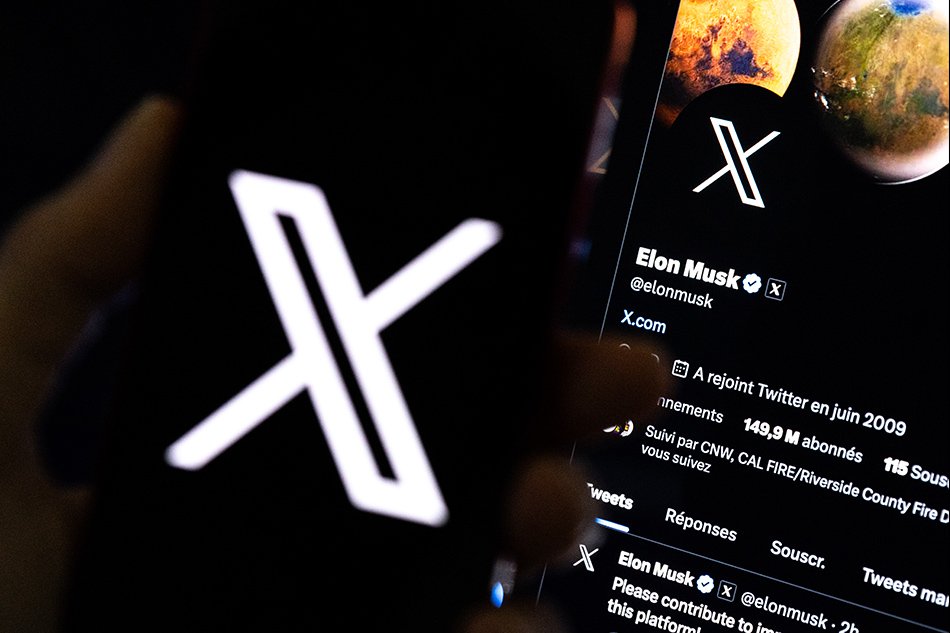
How the Twitter/X algorithm ranks tweets
Twitter’s algorithm uses signals like recency, relevance, diversity, and media files. Tweets with images, videos, GIFs, or polls receive more engagement and are therefore prioritized. The algorithm looks at who you follow, topics you interact with, trending hashtags, and keywords. It also values recency—responding quickly to comments and being active during peak times improves visibility.
Effective content types
1. Short videos and GIFs – Four out of five user sessions on X involve watching videos. Share clips under 45 seconds to capture attention.
2. Threads – Use threaded tweets to tell a story, share insights, or recap events. This keeps users engaged across multiple tweets.
3. Polls – Polls generate interactions and are favored by the algorithm.
4. Memes and GIFs – Keep them on brand; humour can increase shares and likes.
5. Images and infographics – Visual content drives engagement; 96% of users focus on visuals on Twitter/X.
Posting cadence and engagement
• Tweet regularly – Post multiple times per day (e.g., 3–5 tweets plus replies). Real‑time conversation is core to the platform.
• Use hashtags wisely – One or two relevant hashtags per tweet improve discoverability without appearing spammy.
• Engage promptly – Respond to replies within 2–3 hours to maintain recency advantage.
• Join conversations – Comment on trending topics, share user‑generated content, and retweet industry insights.
Metrics to monitor
Key metrics include impressions, engagement rate, profile visits, link clicks, and follower growth. Use Twitter analytics to identify high‑performing tweets and replicate successful elements.
Pinterest – Visual Discovery and Evergreen Pins
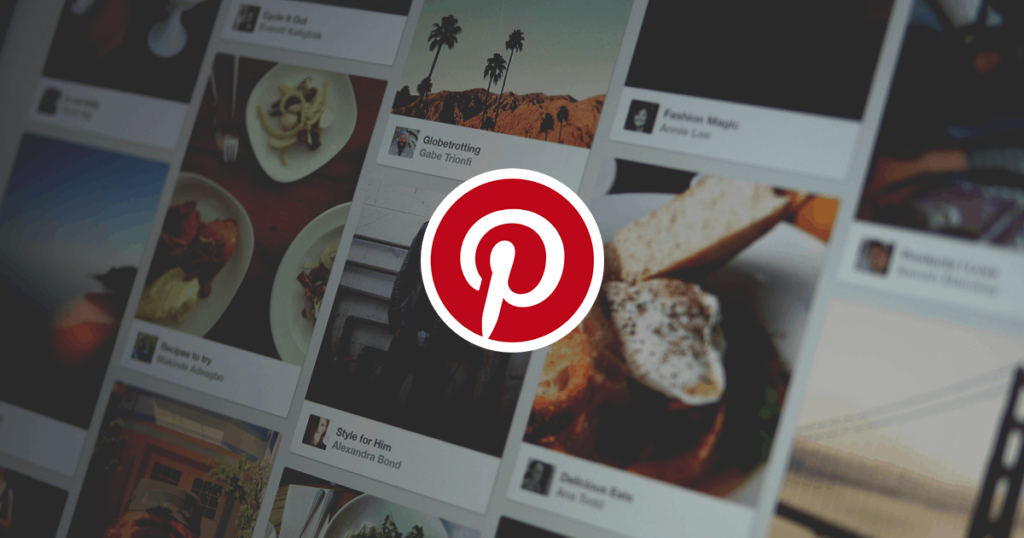
Algorithm overview
Pinterest operates more like a visual search engine than a social network. Its algorithm prioritizes fresh pins—new images and descriptions—over duplicated content. Pins are ranked based on quality, relevance (keywords), and user engagement. Pinning frequency and consistency help train the algorithm.
Content and design tips
1. Fresh pins – Post new pins regularly. SmarterQueue recommends 15–25 pins per day (up to 50) and limiting duplicate pins. Avoid posting the same image or URL repeatedly.
2. High‑quality vertical images – Use a 2:3 aspect ratio with clear visuals and minimal text overlay. Canva templates help maintain consistency.
3. Keyword‑optimized descriptions – Include relevant keywords in your profile, board titles, pin titles, and descriptions. This helps your content appear in search results.
4. Use multiple boards – Create thematic boards and pin to each sparingly. Avoid sharing the same pin on more than ten boards and allow a two‑day gap between repins to avoid spam.
Posting cadence and engagement
• Pin consistently throughout the week rather than dumping pins at once.
• Leverage rich pins (article pins, product pins) to provide extra details and link to your website.
• Follow and engage with other pinners in your niche; repin their content to signal relevancy.
Measuring success
Focus on impressions, saves, click‑through rate (CTR), and monthly views. Track which pin designs and topics drive the most clicks to your site.
Lemon8 and Emerging Platforms – Lifestyle Inspiration and Discovery

What Lemon8 is and how it works
Lemon8, developed by ByteDance (the parent company of TikTok), is a cross between Pinterest, Instagram, and TikTok. According to a 2025 article from KSAT, Lemon8 is described as a lifestyle app where users share photos and videos of daily routines.
When new users log in (often using their TikTok account), the app asks about their interests and builds a “For You” page that mirrors TikTok’s personalization. The home screen is divided into categories like recipes, fashion, fitness, education, and more. You can interact with posts through comments similar to TikTok.
Content approach for Lemon8
1. Lifestyle and aspirational posts – Share visually appealing photos and short videos of routines, products, and experiences. Think of it as a curated mood board.
2. Informative carousels – Create step‑by‑step guides or “how I did it” stories. Lemon8’s combination of visuals and text encourages storytelling.
3. Keywords and categories – Because Lemon8 organizes content by categories, include relevant keywords in your captions and choose the appropriate category to reach interested users.
4. Cross‑pollination with TikTok – Since the app uses TikTok logins and ByteDance data, repurposing TikTok content can help new users find you.
Cadence and engagement tips
• Post consistently – Lemon8 is still growing, so there is less competition. Posting several times per week can quickly build an audience.
• Interact with comments – Respond to questions and encourage community discussions.
• Monitor trending categories – Keep an eye on trending tags within each category to tailor your content accordingly.
Metrics to monitor
Track views, likes, saves, shares, and follower growth. Because Lemon8’s analytics are still evolving, qualitative feedback and community growth are key.
Additional Platforms to Watch
While the platforms above dominate most marketing strategies, there are other networks worth exploring:
• Snapchat – Great for behind‑the‑scenes content and AR filters. If your audience skews younger, consider daily Stories and Spotlight clips. Use interactive lenses and filters to drive engagement.
• WhatsApp Channels – Meta’s new feature allows brands to send broadcast messages to followers. Use it for exclusive updates and personalized offers.
• Discord – Build private communities around your brand. Offer exclusive content, host Q&As, and create topic‑specific channels.
• Reddit – Participate in relevant subreddits to share expertise and answer questions. Follow community rules to avoid self‑promotion.
Putting It All Together – Building Your Multichannel Content Strategy
Start with your audience and objectives
Before creating any content, define your target audience and what you want to achieve—brand awareness, lead generation, community building, or sales. Map out personas across platforms. For example, LinkedIn followers might be decision‑makers looking for thought leadership, while TikTok viewers seek quick tips and entertainment.
Develop a content pillar strategy
Identify 3–5 core themes that align with your brand values and audience needs. Each pillar should have related subtopics. For a marketing agency, pillars could include content strategy, social media trends, AI tools, and case studies. Use these pillars to plan your content calendar and ensure consistency.
Repurpose and remix content across platforms
Maximize efficiency by repurposing content in multiple formats:
• Turn a long‑form blog post into LinkedIn carousels, Instagram Reels, TikTok videos, and Pinterest infographics.
• Host a webinar and break it into short YouTube videos, podcast episodes, and carousel posts.
• Share podcast highlights on Threads and Twitter/X to spark conversation.
Embrace data, experimentation, and iteration
Use analytics from each platform to understand what resonates. If short Reels are driving engagement on Instagram but carousels perform best on LinkedIn, adjust your content mix accordingly. Run A/B tests on thumbnails, headlines, and posting times. Algorithms change constantly—stay agile.
Maintain brand consistency and storytelling
No matter how diverse your platform mix, maintain a consistent voice and visual identity. Build narratives that connect individual posts into a larger story about your brand purpose and values. Over time, your audience will recognize and trust your unique perspective.
Invest in community and relationships
Social media remains social. Prioritize building relationships through thoughtful replies, user features and collaborations. Celebrate community milestones, repost user content, and share behind‑the‑scenes moments. Your audience will reward you with loyalty and advocacy.
Frequently Asked Questions

1. How often should I post on each platform?
Posting frequency varies by platform. For LinkedIn, aim for 2–4 posts per week. YouTube thrives on weekly or biweekly videos. Instagram feed posts 3–7 times per week plus daily Stories.
Facebook posts 3–5 times per week. TikTok encourages at least one video per day, while Pinterest recommends 15–25 fresh pins daily. Threads and Twitter/X require daily activity for visibility.
2. What’s the ideal video length?
Short‑form dominates: TikTok and Instagram Reels perform best under 15 seconds, though TikTok allows up to 10 minutes. YouTube Shorts can be up to 3 minutes. Long‑form videos on YouTube should be 5–20 minutes, with clear storytelling and high retention.
3. Do hashtags still matter?
Yes, but use them strategically. Hashtags help categorize content on Instagram, LinkedIn, Twitter/X and TikTok. Use a mix of niche and broad tags (3–5 on LinkedIn, 5–10 on Instagram, 1–2 on Twitter/X). On Pinterest, keywords in titles and descriptions function like hashtags.
4. How can I measure ROI from social content?
Define clear goals (traffic, leads, sales, engagement). Track metrics like reach, engagement rate, click‑through rate, conversions, follower growth, and retention. Use UTM parameters and analytics tools to connect social activity to website actions.
5. Should I use AI to generate content?
AI can help brainstorm, draft captions, and suggest hashtags. However, your brand voice should remain human. Use AI as a co‑pilot to speed up production, not as a replacement for strategy and authenticity.
6. How important is responding to comments?
Extremely. Instagram users will abandon a brand if it doesn’t respond quickly, and Facebook prioritizes posts that spark conversations. Prompt responses build loyalty and feed the algorithms.
7. Do I need to be on every platform?
No. Focus on the platforms where your audience spends time and where your content fits best. It’s better to master a few platforms than spread yourself thin. Test emerging networks like Lemon8 or Threads if they align with your brand.
8. How can I stand out when everyone is creating videos?
Develop a unique style and voice. Share original insights, behind‑the‑scenes moments, and personal stories. Use storytelling structures, strong hooks and clear calls to action. Engage with your niche community to build relationships.
9. What’s the role of influencers in 2025?
Influencers help brands tap into niche communities and build trust. Micro‑influencers often provide higher engagement and authenticity. Collaborate on co‑created content, product launches, and UGC campaigns.
10. How do I stay ahead of algorithm changes?
Follow reputable social media news sources, read platform release note,s and test regularly. Understand core ranking signals—engagement, relevance, recency—and design content that fosters genuine interactions. Being proactive and adaptive keeps you ahead.
This ultimate guide synthesizes current research and platform insights so you can craft a 2025 content strategy that captures attention, builds communities, and drives results across LinkedIn, YouTube, Instagram, Facebook, Threads, Twitter/X, TikTok, Pinterest, and emerging platforms like Lemon8. By focusing on storytelling, authenticity, and community, your brand will rise above the noise.
